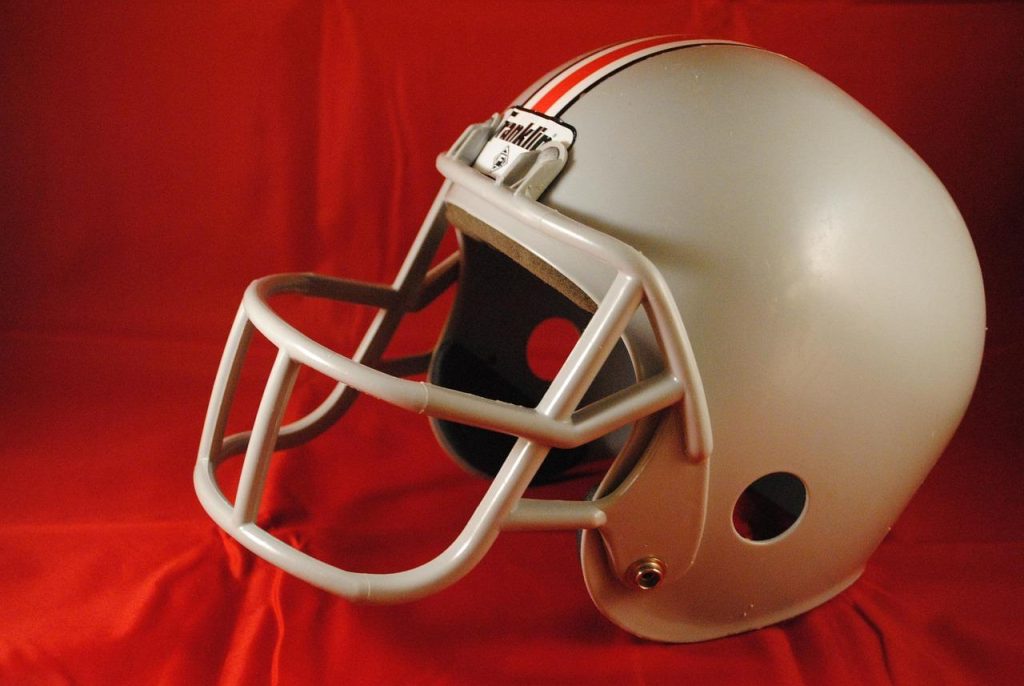In the ever-evolving theater of the NFL, where legends are forged and legacies scrutinized, rankings often ignite fiery debates among fans and analysts alike. Recently, a seismic shift has taken place in the quarterback hierarchy: Patrick Mahomes, the indomitable Kansas City maestro, has been ranked second-best behind the rising star Josh Allen. This provocative ranking, featured in The Facility, raises compelling questions about Mahomes’s current dominance and whether the reigning MVP is beginning to lose his once iron grip on the top spot. As the season unfolds, we delve deeper into the factors fueling this reassessment and explore what it truly means for the future of these two dynamic leaders under center.
Patrick Mahomes in the Spotlight Assessing the Rise of Josh Allen as the Premier Quarterback
In the ever-evolving narrative of NFL quarterback supremacy, Patrick Mahomes has long been the shining beacon, dazzling fans and analysts alike with his uncanny ability to reshape games. Yet, the spotlight is undeniably shifting. Josh Allen’s meteoric rise has sparked intense debate, prompting a reevaluation of who truly holds the mantle of *premier quarterback*. Allen’s blend of raw power, precision, and clutch performance has not only elevated the Buffalo Bills but also redefined what elite quarterback play looks like in today’s NFL landscape.
Key aspects contributing to Allen’s ascendancy over Mahomes include:
- Consistent Statistical Growth: Allen’s season-over-season improvements in passing yards, touchdowns, and quarterback rating have showcased his relentless development.
- Commanding Presence: His leadership on the field resonates with his dynamic playstyle, inspiring a resilient Bills offense.
- Mechanical Refinement: While Mahomes mesmerizes with improvisation, Allen’s enhanced accuracy and decision-making provide a new level of efficiency.
- Clutch Performances: Allen’s ability to execute under pressure in high-stakes moments has shifted the narrative around his clutch credentials.
While Mahomes remains a juggernaut of innovation and athleticism, the changing tide signals a fascinating quarterback rivalry – one that propels both athletes to push boundaries and continually elevate the game. The question is no longer just about who reigns supreme, but how these two icons will redefine the quarterback legacy for years to come.
Analyzing Key Performance Metrics What Mahomes Can Learn from Allen’s Game
Josh Allen’s ascent has arguably shifted the quarterback landscape, turning the spotlight not just on his feats but on what Patrick Mahomes might refine in his own game. When dissecting key metrics like completion percentage, yards per attempt, and interception rate, Allen’s stats reflect a sharper balance of risk and efficiency. Mahomes, known for his improvisational brilliance, sometimes pays the price with higher turnover rates and occasional dips in accuracy under pressure. By adopting a more calculated approach, reminiscent of Allen’s methodical yardage gains and decision-making under duress, Mahomes could enhance his consistency without sacrificing the explosive playmaking that defines his style.
- Red Zone Efficiency: Allen’s poise near the goal line has led to a higher touchdown percentage, a metric Mahomes could improve upon by limiting forced throws.
- Third-Down Conversion Rate: Allen excels in clutch moments, sustaining drives with timely completions that Mahomes can emulate to maintain offensive momentum.
- Pocket Presence and Mobility: While both quarterbacks use mobility to buy time, Allen’s ability to threaten defenses with designed runs complements his passing choices effectively.
Analyzing these performance pillars reveals that the next evolution for Mahomes isn’t about reinventing his game but integrating the discipline and strategic nuance that Allen demonstrates nightly. This synthesis could prove vital in reclaiming the mantle of the league’s top quarterback and maintaining his grip on elite status amidst an increasingly competitive field.
The Evolution of Leadership and Adaptability Strategies for Mahomes to Regain the Top Spot
Patrick Mahomes has long been celebrated for his uncanny ability to make split-second decisions that define games. However, amidst rising competition, the Kansas City QB’s leadership approach is undergoing a subtle transformation. Instead of relying solely on his unmatched arm talent, Mahomes is increasingly embodying a holistic leadership style that inspires resilience within his team. This means fostering stronger communication hubs during high-pressure moments and encouraging a democratic offensive mindset where emerging playmakers share the spotlight. His dynamic adaptability isn’t just about agility on the field but also about shifting psychological momentum during critical drives.
To reclaim his throne as the NFL’s top quarterback, Mahomes may lean into a number of evolving strategies such as:
- Integrating advanced analytics: Utilizing data-driven insights to tailor play calls that exploit opponent weaknesses more efficiently.
- Enhancing mental conditioning: Strengthening focus and emotional control to maintain peak performance under intense spotlight pressure.
- Mentorship roles: Developing younger teammates to spark a collective rise and sustain long-term offensive dominance.
- Versatility in gameplay: Mixing traditional pocket passing with unexpected mobility to disorient defenses consistently.
By blending strategic innovation with mature leadership, Mahomes is not simply trying to regain a ranking but to redefine what it means to be a next-generation quarterback in the modern NFL.
Training Innovations and Tactical Adjustments Recommendations to Reinforce Mahomes’ Competitive Edge
To sustain and elevate Patrick Mahomes’ elite status, integrating cutting-edge training methodologies tailored to his unique playing style is essential. Embracing technology-driven feedback systems such as real-time biomechanical analysis can optimize his throwing mechanics, reducing energy waste and injury risk. In addition, incorporating cognitive training tools – like virtual reality simulations that mimic defensive schemes – will sharpen his decision-making speed under pressure. Conditioning regimes that emphasize explosive agility, combined with recovery protocols founded on cryotherapy and personalized nutrition, will ensure Mahomes maintains peak physical resilience throughout the demanding NFL season.
On the tactical front, a strategic recalibration that subverts defenders’ growing familiarity is vital. Chiefs’ offensive coordinators should consider expanding Mahomes’ playbook with more spontaneous, read-option plays that exploit his mobility and improvisational talent. Integrating unorthodox formations and time-sensitive audibles can keep defenses guessing and off-balance. Moreover, fostering tighter synchronization with receivers through synchronized timing drills will enhance route precision, maximizing passing window efficiency. Together, these innovations and adjustments serve not only to reinforce Mahomes’ competitive edge but also to future-proof his game against the evolving defenses of tomorrow.
As the NFL landscape continues to evolve, so too does the narrative surrounding its elite quarterbacks. Patrick Mahomes, once the undisputed king, now finds himself in the rarefied air of second place-just behind Josh Allen. But rankings, while telling, are only one part of the story. Mahomes’ talent, leadership, and ability to deliver under pressure remain unquestioned. Rather than signaling a loss of grip, this shifting hierarchy could ignite a new chapter in his already storied career-one defined not by complacency, but by relentless pursuit. In the ever-competitive arena of professional football, staying at the top requires more than just skill; it demands a constant evolution. For Mahomes, the question isn’t whether he’s losing ground-it’s how he will respond to the challenge ahead.



